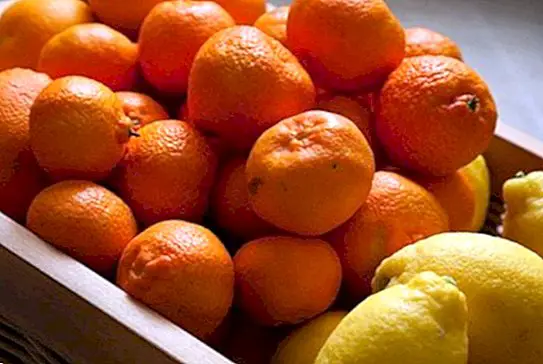How to choose the best legumes and how to preserve them
The vegetables are the seeds that are obtained from the so-called plants legumes or fabaceae. This small but great food at the same time, should be part of a healthy and balanced diet, because they provide many benefits to our body.
For example, they are rich in nutrients among which we highlight a high content of proteins and minerals, also vitamins of group B, carbohydrates, soluble and insoluble fiber, folic acid, and also are low in fat.
Legumes are a recommended food in all types of diets, their consumption is advised in case of suffering from high cholesterol since it helps us to lower their levels as well as to prevent it.
In diabetic people it is also advised that legumes do not lack in their diet because it helps to maintain stable blood sugar levels. In addition, we must consume legumes at least two or three times a week.
In the list of vegetables that we can find we have the lentils, chickpeas, beans or beans, dried beans.
Therefore, as we have said before, they should not be lacking in our diet and for this we must always have them in our pantry, as well as being a superfood with vegetables, we can prepare countless recipes.
Below we provide some tips that can help us when buying vegetables, which ones to choose, we will also offer tips or small tricks that will help us to conserve them better.

Which legumes to choose when buying?
We arrived at the market and we found packages of pulses of different brands, provenances, of ecological cultivation or own cultivation, those that are cultivated for industries ...
We must say that both are going to provide us with the same nutrients, however, if we can afford to buy our own or organic vegetables, we will notice how their quality improves, and their price is somewhat more expensive.
Although in the market we will find vegetables throughout the year, it is interesting to note that the vegetables are grown in the spring, picked in summer, and then dried until the fall, when they are put on sale.
Before cooking the vegetables, we must soak them in water to hydrate them for a few hours and then cook them, both the soaking time and the cooking time will vary depending on the type of vegetable that we have chosen to cook.
Having a pot of legumes already industrially cooked in the pantry is a good option as a resource if we do not have much time to cook.
When buying cooked vegetables, it is better to choose those that contain less additives and less salt, as natural as possible.
Before consuming it or including it in any recipe we must remove the water from the soaking in which they come and rinse them well, we drain them and they are ready to eat them.
They are ideal when preparing salads, pasta dishes, include them in scrambled eggs, stir-fries, soups or stews.

How to preserve legumes
We can preserve legumes in different ways, then we provide some tips that can come in handy:
- Freeze the vegetables: cook the vegetables until they are tender, let cool, then put them in a container suitable for the freezer with the same cooking water and freeze, so we will have ready to use them at the time of cooking.
- Boil them previously and freeze them: boil the vegetables, about 5 or 6 minutes, drain them, let them cool and then freeze them, it is a good option to keep them tender, especially when it comes to chickpeas.
- Pack them in sterilized glass jars and keep them in the fridge for a few days: Once the vegetables are cooked, put them next to the cooking water in a glass jar that we have previously sterilized, fill the broth up, close the pot well and dump it down until it is cold, in this way we will form a half-empty when it has cooled we keep the jar of vegetables in the fridge.
- Pack them in glass jars as a preserve: in this way the packaging will last us longer in the pantry. Cook the vegetables until they are tender, put them in a glass jar previously sterilized and hermetically sealed, cover with the cooking water to the top, close well and put the pot with the lid down into a pot with water and Let boil for half an hour.
- We have plenty of legumes to soak or we decided not to cook legumes: in this case if we have put many vegetables soaking, or we decided to make another recipe that does not carry vegetables, drain the vegetables well, put them in a freezer bag, tight, we make sure that the bag is closed and put it in the freezer.
When we go to cook them it will not be necessary to put them back to soak, we have hydrated them previously.
The following advice is indicated for keep a package of legumes, the best option is to look for a dry, cool and dark place, in which we avoid the excess of both heat and humidity.
Once we have opened the package of vegetables if we are not going to cook them all it is also convenient not to leave the package open, better to store the vegetables in a tightly closed container, jars or glass jars with airtight seal are ideal. This article is published for informational purposes only. You can not and should not replace the consultation with a Nutritionist. We advise you to consult your trusted Nutritionist. ThemesVegetables


